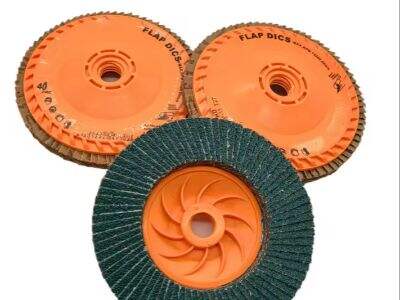When you visit the store to purchase sandpaper, you may notice different numbers on the packages. These numbers are grit grades, and they’re critically important in sanding. But what are grit grades, and why should we care? For more details regarding sandpaper grit grades and their relevance in your sanding projects, read on.
What Are Grit Grades?
Grit grades indicate the coarseness or fineness of the sandpaper. 300 is about as smooth as sandpaper gets. So a 400 grit is super smooth, and is nice for smoothing out uneven surfaces.
Why Grit Grades Are Important?
What is the Grit grade for sandpaper? Using sandpaper with a grit that is too coarse can leave scratches on your surface. If you use too high a grit of sandpaper, it will take forever to get your project done. Knowing Sanding Disc grit grades helps ensure that you have the correct sandpaper for your job.
What You Get with Grit Grades?
And, the grit grade of your sandpaper determines how smooth your surface will become. If you begin with a coarse grit, you will rapidly remove bumps and high spots. Using finer Fiber Disc grits will make the surface better and smoother. If you navigate your way through the grit grades, you will achieve great results with your sanding projects.
THE RIGHT GRIT FOR YOUR PROJECT
When choosing between grits for your project, consider how coarse the surface is. If it has lots of bumps and requires a lot of smoothing, you start with rough grit such as 60 or 80. Take away the rough with a medium Sanding Pad grit such as 120 or 150 to get the finish better. Then sand with something like 220 or 320 grit to give a nice professional finish.
Achieving Great Sanding Results: The Key
Using the right grit grades and being patient is how you achieve good sanding results. Sanding takes patience, so don’t rush. This usually builds a nice finish that really gives a professional look to your projects, which is the reason why they start at a coarse grit and then end at finer grits.
Summary: it means that grit grades are quite important for sandpaper and can affect the quality of your sanding projects. By knowing the varying grit grades available, selecting the proper one needed for your project, and transitioning from coarse, rough grits to finer ones, you’re bound to achieve finishes that’ll make your work shine. So when you buy sandpaper next time, now you know the grit grades and improve your skills in sanding.
 EN
EN
 AR
AR
 NL
NL
 FR
FR
 DE
DE
 KO
KO
 PL
PL
 PT
PT
 RU
RU
 ES
ES
 AF
AF
 LA
LA


